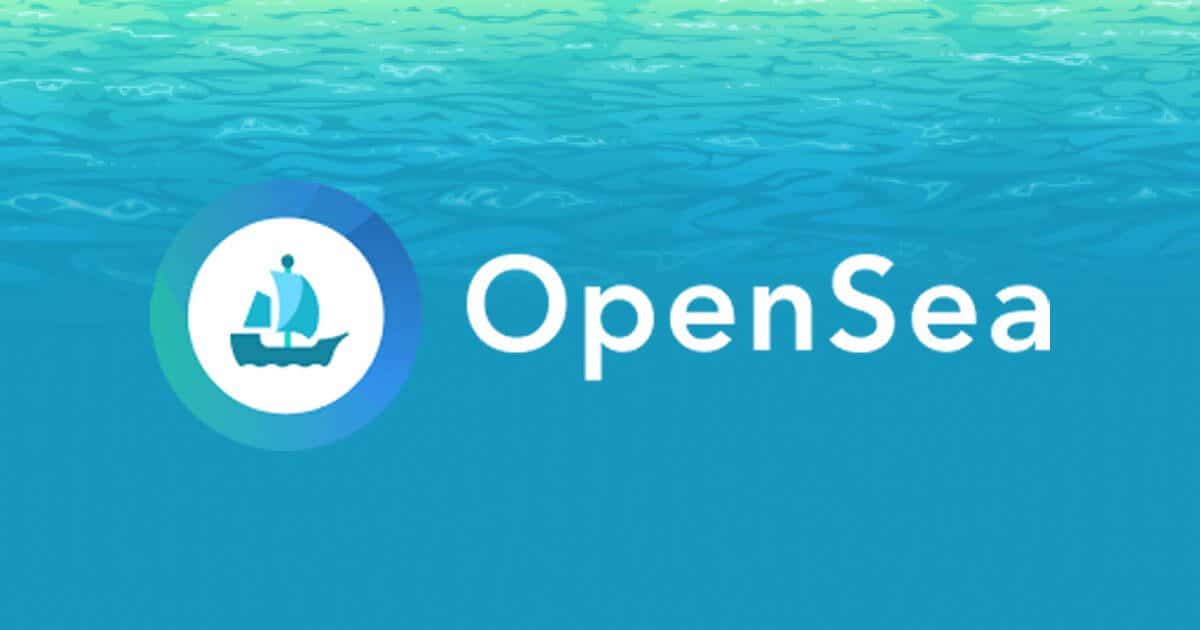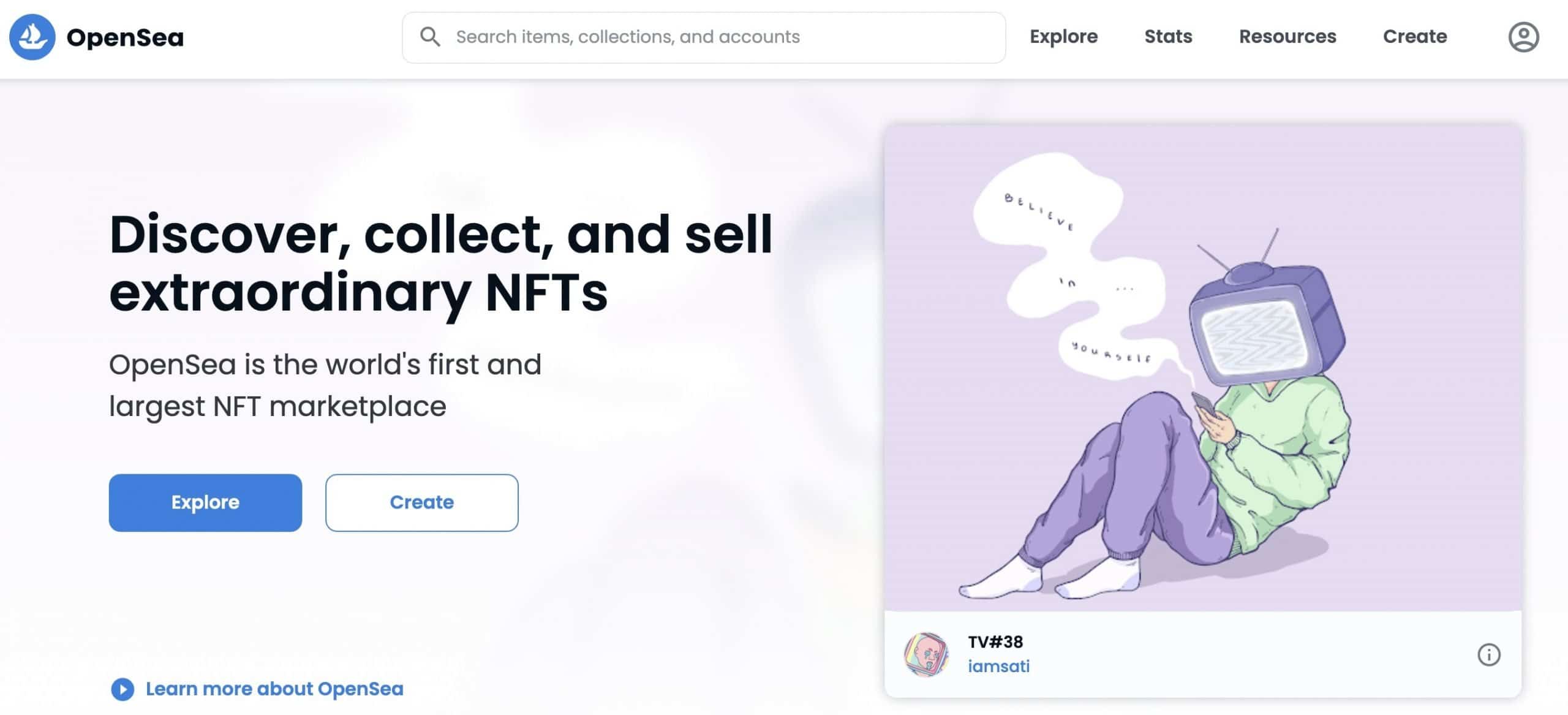Sooner rather than later, anyone exploring NFTs for the first time is likely to come across the NFT marketplace, OpenSea. As one of the oldest NFT marketplaces – with the biggest userbase by far – OpenSea is the first name that comes to mind when talking about the secondary market for NFTs.
But what exactly is OpenSea and how does it work? We’ve got you covered so read on!

The history of the OpenSea NFT marketplace
Founded back in December 2017 by Devin Finzer and Alex Atallah, OpenSea is a platform for minting, buying, selling, and viewing NFTs. Popular analogies have referred to the company as an “eBay for crypto assets” or a “Web3 Amazon”.
A major inspiration for OpenSea came from the new-at-the-time ERC-721 Ethereum standard, which enabled the early NFT projects that set the stage for the industry we know today.
Another inspiration for the OpenSea marketplace was the OG NFT collection CryptoKitties, which had its very own dedicated marketplace for trading. The idea then, was for OpenSea to be a single destination where people could manage and trade a variety of different NFTs.
For a while, it didn’t see all that much action and focused on building out its platform. Of course that all changed in 2021 when several factors including the increasing popularity of NBA Top Shot, Beeple’s landmark sale, and the success of CryptoPunks and the Bored Ape Yacht Club brought NFTs to the mainstream in a major way.

How does the NFT marketplace work?
OpenSea is a non-custodial, peer-to-peer NFT marketplace. That means a couple of things. For one thing, the non-custodial part refers to the fact that, in theory, there is not a centralized group controlling the assets on OpenSea (more on centralization issues with OpenSea to come).
The way it works is that the transactions on OpenSea are fully governed by smart contracts. Thus allowing for trustless transactions. What’s more, anyone with a compatible crypto wallet can connect to OpenSea and begin trading.
On the other hand, the peer-to-peer aspect of OpenSea relates to the fact that OpenSea itself doesn’t sell NFTs. Rather, it allows people or projects to sell NFTs to other people. OpenSea does provide a gas-free minting option for users to easily create their NFTs on OpenSea. Even so, any NFTs from supported blockchains can and do trade on the NFT marketplace.
As with most online marketplaces, OpenSea makes money through a fee on transactions. Its fee at this time is 2.5% of the transaction. This number often comes up in criticisms of OpenSea as compared to some of its competitors with lower fees. Although in fairness, some other marketplaces have fees that are as high as 15%.
What kind of NFTs trade on OpenSea?
OpenSea initially catered only to Ethereum NFTs, the pioneering smart contract chain. Ethereum is notably the home of the most prominent NFT collections today. However, OpenSea has expanded to become a cross-chain marketplace, currently offering trading on NFTs on the Polygon, Solana, and Klatyn blockchains.

OpenSea’s dominance of the NFT market so far
According to DappRadar’s rankings, OpenSea leads all NFT marketplaces in all-time trade volume, and is second only to the Axie Infinity marketplace on the Ronin sidechain in terms of user count.
Without a doubt, OpenSea used its years ahead of the curve well. Since its founding, it perfectly positioned itself for the explosion of NFTs in 2021. It made a marketplace that was relatively easy to navigate and available for anyone to trade on. This helped lead it to a higher rate of adoption than other NFT marketplaces.
Its large user base gives creators the biggest audience out there to market their NFTs. By the same token, NFT owners have an endless variety of NFTs to explore and collect.
Obviously, the rising interest and activity in NFTs equaled a massive surge in OpenSea’s userbase and transaction volumes. As a matter of fact, by the beginning of 2022, the company had secured $300 million in funding, amounting to an impressive $13.3 billion valuation.
Even so, OpenSea has faced many public challenges over the past months. Although it’s still the biggest and most used NFT marketplace, its grip on the market has loosened somewhat.

OpenSea’s highly publicized flaws and missteps
Is the OpenSea NFT marketplace “too centralized”?
One thing that often comes up is the extent to which OpenSea is a centralized NFT marketplace, working within a decentralized world. This is a major sticking point for a sizable amount of NFT owners. That is to say, many people rail against some of OpenSea’s actions as not being truly Web3.
To be sure, OpenSea may not be able to remove any NFTs from the blockchain. However, it fully has the power to remove NFTs from its marketplace. And given its dominance and the size of its userbase, this move can be devastating for NFT creators. To that end, there are often complaints made on Twitter and elsewhere by NFT projects that have been delisted from the OpenSea marketplace.
OpenSea has been no stranger to scandals
One of the bigger scandals in the NFT world in 2021 was of course OpenSea’s ‘insider trading’ fiasco. This took place in September 2021, when Nate Chastain, Opensea’s then-Head of Product, resigned from the NFT marketplace after being accused of abusing his position.
This came immediately after OpenSea acknowledged that an employee had been front-running NFT projects that were scheduled to appear on the front page of the NFT marketplace. The admission followed a few days of discussion on NFT Twitter. All sparked by a vigilant user who pointed out some suspicious activity from Chastain’s public Ethereum wallet.
Things didn’t get all that much better for OpenSea in the months that followed. From the centralization concerns to a long-lasting exploit of OpenSea’s delisting system that led to the loss of countless high-value NFTs, OpenSea has been taking quite a beating in the Twitter court of public opinion, essentially from Q4 2021 until now.

What’s the outlook for the OpenSea NFT marketplace?
All things considered, OpenSea won’t be going anywhere anytime soon. While competitors spring up on a near-daily basis, the head start OpenSea got in establishing its NFT marketplace is holding on strong. To illustrate, it is still beating out its closest competition, LooksRare, by most metrics. To say nothing of the issues that the LooksRare platform itself has faced.
OpenSea also faces competition in the form of NFT marketplaces on other blockchains, like the top Solana marketplace Magic Eden. Nevertheless, with OpenSea now moving into the Solana space, Magic Eden might be facing stiffer competition in the future.
Between adding integrations for more blockchains, and adding other user-friendly features like card payment options, it remains to be seen if other NFT marketplaces could catch up to OpenSea soon. Let alone overtake it.
Source NFT EVENING

